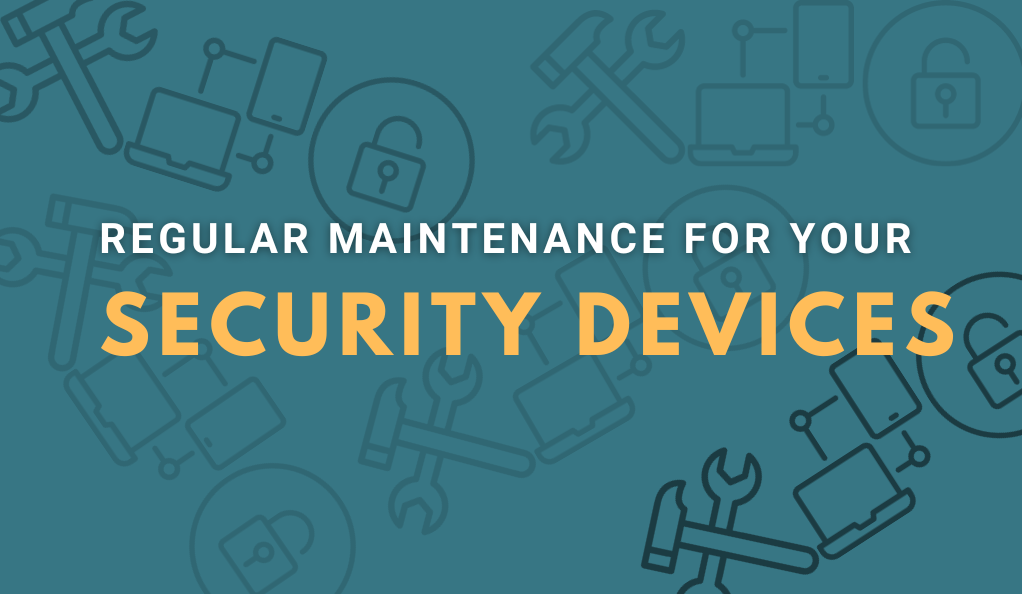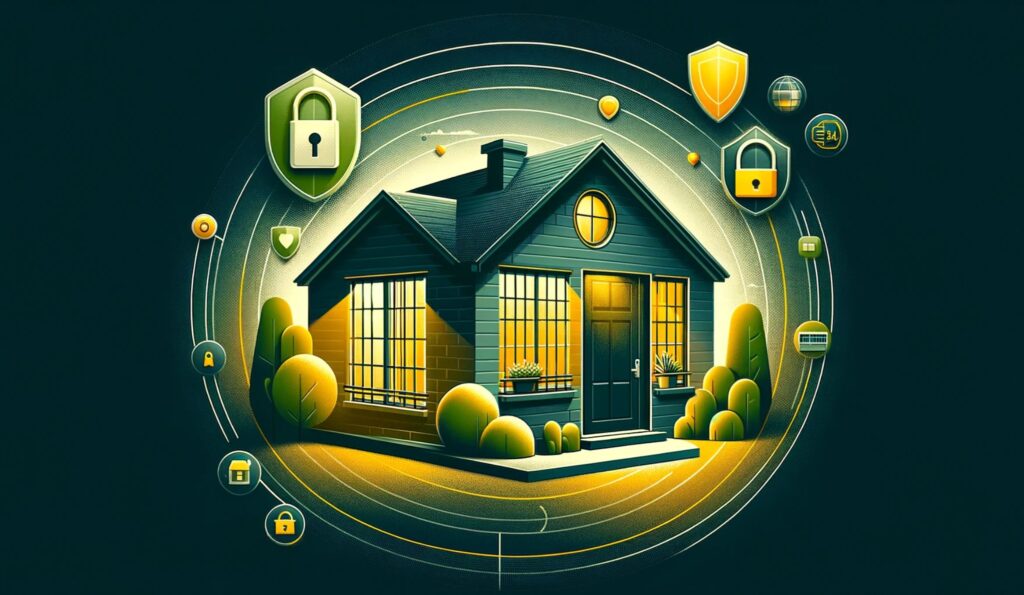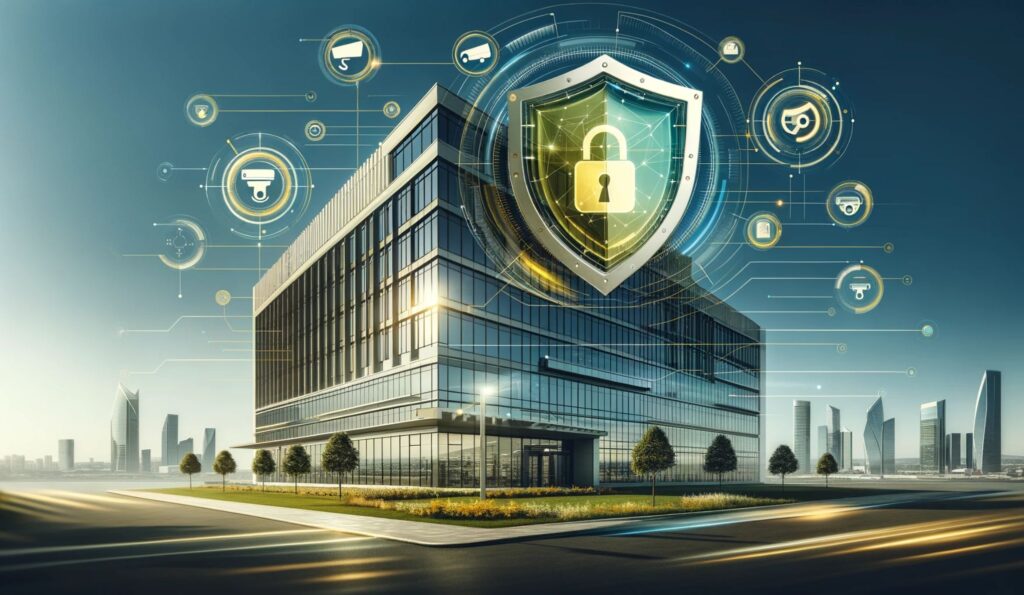In today’s digital age, the adoption and dependence on security devices have surged dramatically. From CCTV cameras to smart door locks and alarms, both households and businesses have integrated a multitude of devices to ensure safety and monitor activities. However, merely installing these devices is only the first step. To guarantee they function seamlessly, one aspect often overlooked yet paramount to their efficiency is regular maintenance.
Understanding the Significance of Maintenance
If we draw a parallel, security devices are much like vehicles. While a brand-new car runs smoothly and efficiently, if it is not regularly serviced, it might start experiencing problems, from minor glitches to significant breakdowns. Similarly, your state-of-the-art security system can begin to falter without consistent upkeep, and the consequences might be more dire than a car stalling.
Consider this scenario: A business invests heavily in installing a top-tier security system, ensuring all potential vulnerabilities are covered. Over time, without proper maintenance, a camera lens gathers dust, impairing visibility. Simultaneously, another camera’s firmware becomes outdated, making it susceptible to hacking. A potential intruder, recognizing these lapses, takes advantage. This incident could have been easily prevented with regular checks and maintenance.
A Snapshot of Security Device Maintenance Importance:
| Aspect | Without Maintenance | With Regular Maintenance |
|---|---|---|
| Performance | Degraded functionality, lower efficiency | Optimized, top-tier performance |
| Lifespan of Device | Shortened, frequent replacements | Prolonged with reduced wear and tear |
| Reliability | Unexpected breakdowns, false alarms | Consistent functionality, fewer errors |
| Cost Implications | Expensive repairs, replacements | Minor costs for upkeep, long-term savings |
In light of this, it becomes abundantly clear that consistent maintenance isn’t merely a suggestion—it’s a necessity. It is the bridge that ensures the security measures you’ve put in place work tirelessly and effectively, safeguarding your interests.
The Lifeline of Security Devices: Maintenance
To truly grasp the criticality of maintenance, it’s vital to understand the anatomy of security devices and their intricate functioning. These devices, often perceived as simple monitoring tools, are a combination of sophisticated software, advanced sensors, and robust hardware. Over time, just like any other machine or tool, wear and tear can affect their operations.

Why Maintenance Takes the Center Stage
A pivotal mistake many individuals and organizations make is considering security devices a one-time investment. However, as technology advances, so do potential threats. Hackers, for instance, are always on the lookout for vulnerabilities. An outdated software can easily become their gateway, turning your security device from a protective shield to a potential liability.
Furthermore, physical components of the devices, such as lenses, sensors, and wirings, are exposed to external elements. Dust, moisture, and changing temperatures can degrade their quality and effectiveness over time. Maintenance ensures that these components are in their best condition, ensuring clear images, accurate motion detections, and prompt alerts.
Real-Life Consequences of Negligence
To truly drive home the point, let’s delve into some real-life examples:
- Retail Store Heist: A retail store in New York had an impressive security system. However, they overlooked maintenance for over a year. The intruders identified a blind spot created due to a malfunctioning camera and exploited it, leading to a significant financial loss.
- Data Breach in a Corporate Office: A renowned corporation believed their biometric access controls were infallible. Unfortunately, outdated firmware was their Achilles’ heel. A group of hackers exploited this vulnerability, gaining access to confidential data and causing irreparable reputational damage.
- Home Invasion: A suburban home had installed smart door locks, thinking it would be enough to deter potential burglars. Without regular software updates, an intruder was able to override the system, breaching the home’s security.
These incidents underscore that regardless of the quality or cost of your initial security system, without regular checks and upkeep, vulnerabilities can and will emerge.
Proactive vs. Reactive Approach
It’s always better to be proactive rather than reactive, especially when security is at stake. Regular maintenance acts as a preventive measure, identifying and rectifying potential issues before they snowball into critical problems. On the other hand, a reactive approach not only compromises safety but often leads to more significant expenses and complications.
Benefits of Regular Maintenance
While we have brushed upon the significance of maintenance, let’s break down its multifaceted benefits. When an individual or organization commits to a routine of regular check-ups and updates for their security devices, the advantages extend far beyond mere functionality.
Enhanced Performance
Every piece of technology, be it a computer, a smartphone, or a security camera, has an optimal state of functioning. As devices age and accumulate dust or software becomes outdated, their performance can deteriorate. Maintenance ensures:
- Clear Visibility: Clean lenses in cameras ensure that footage remains crisp, allowing for accurate identification and monitoring.
- Prompt Response: Sensors, when kept in top shape, detect movements or breaches swiftly, triggering alarms or notifications.
Longevity
Routine maintenance can significantly prolong the lifespan of your security devices. By addressing minor issues immediately:
- Wear and tear is minimized, ensuring that devices don’t “age” prematurely.
- The need for frequent replacements is reduced, leading to long-term savings.
Reliability
Nothing can be more disheartening than a security device failing just when you need it the most. Regular checks ensure:
- Battery-operated devices are always charged and ready.
- Software vulnerabilities are patched, minimizing the risk of hacks or breaches.
- The system as a whole functions seamlessly, without unexpected downtimes or errors.
Cost-Efficiency
The initial investment in security devices can be substantial. Maintenance ensures you get the most out of this investment by:
- Preventing major malfunctions that can be expensive to repair.
- Reducing the need for frequent device replacements.
- Keeping software updated, thereby avoiding potential security breaches that can lead to financial liabilities.
Peace of Mind
At its core, the primary purpose of any security system is to provide peace of mind. Knowing that your devices are in top shape, regularly updated, and functioning at their best offers an unmatched sense of security and comfort.
Common Maintenance Tasks
Maintenance might sound like a daunting task, especially for those who aren’t technically inclined. However, it doesn’t necessarily entail complex procedures. Let’s delve into the fundamental tasks that can ensure your security devices remain in prime condition.

One of the primary maintenance tasks for security devices is cleaning the lenses and sensors. Over time, these components can accumulate dust, smudges, or other external contaminants. Keeping them clean ensures that devices capture clear images and respond accurately to environmental triggers. Another pivotal aspect of upkeep is addressing software and firmware updates. Manufacturers frequently release updates to improve device functionalities, fix bugs, or patch security vulnerabilities. It’s essential to stay abreast of these updates to ensure the device operates optimally and remains secure from potential threats.
For devices that rely on wireless technology, battery health becomes a focal point of maintenance. Regular checks or replacements ensure these devices remain functional and responsive. A drained battery can inadvertently disable a device, leaving a potential security gap. Lastly, for security systems that employ wired connections, regular inspections of the wiring are crucial. Over time, wires can degrade, become loose, or even suffer damage. Ensuring all connections are secure and intact prevents disruptions and potential system failures.
Routine maintenance, is a blend of simple physical checks and software updates. By incorporating these tasks into a regular schedule, you can ensure the longevity and effectiveness of your security devices. It’s about proactive care, a small investment of time that can prevent significant issues down the line.
Identifying Signs of Wear and Tear
An essential facet of proactive maintenance is the ability to spot early indicators of potential problems. Recognizing these signs can make the difference between a minor adjustment and a major repair, or even a security breach. Here’s a guide to understanding and detecting issues in their infancy.
Reduced Efficiency or Faulty Behavior
Every device has its “normal.” Deviations from this norm can often be the first clue.
- Cameras: Blurred images, diminished night vision capabilities, or flickering footage.
- Sensors: Delayed responses or false alarms.
- Alarm Systems: Unexpected triggers or failure to arm/disarm.
Physical Damages
Visible damages or anomalies can be early indicators of wear and tear.
- Exterior: Cracks, moisture condensation inside camera domes, or corrosion in wired connections.
- Interface: Pixelated screens, unresponsive buttons, or glitching displays.
Auditory Indicators
Sounds can be telling indicators of an issue.
- Whirring: Unusual noises from devices, especially hard drive-based recorders, may signal a malfunction.
- Beeping: Some devices emit warning beeps when batteries are low or if there’s a system error.
Software Glitches
Repeated software crashes, lagging interfaces, or devices frequently requiring restarts can be indicators of underlying problems. It may signal the need for software updates or, in more severe cases, potential hardware issues.
Reduced Battery Life
For battery-operated devices, a notable decrease in the time between charges or replacements can indicate the battery’s end of life or a device drawing more power due to a malfunction.
Alerts and Notifications
Modern security systems, integrated with smart technology, may send notifications if something’s amiss. These can range from “Camera Offline” notifications to “System Health Check Recommended” alerts.
Age of the Device
While this isn’t a direct sign of wear and tear, understanding the average lifespan of your security devices can help set expectations. If a device is nearing the end of its expected life, it may be time for more frequent checks or considering replacements.
Awareness is the first line of defense. By regularly checking your devices and understanding what’s “normal,” you can swiftly identify anomalies. Addressing these early signs not only ensures uninterrupted security but can also save significant time and costs associated with more severe damages or malfunctions.
Embracing Modern Solutions
The world of technology is evolving at an unprecedented rate, and the realm of security devices is no exception. Modern solutions can transform the way we approach maintenance, making it more efficient, accurate, and less cumbersome. Let’s delve into how integrating technology can revolutionize maintenance protocols.
Smart Diagnostic Tools
Today’s advanced security devices often come equipped with built-in diagnostic tools. These tools:
- Automatically Monitor: Continuously check the health of the device, from battery levels to software status.
- Send Alerts: Notify users of any discrepancies, potential issues, or required updates.
- Recommend Solutions: Based on the problem detected, these tools might suggest steps for resolution, streamlining the troubleshooting process.
Integration of IoT (Internet of Things)
IoT, which is the concept of connecting devices to the internet or with each other, holds immense potential for security device maintenance.
- Remote Monitoring: Allows users to check the status of their devices from anywhere, anytime, using a smartphone or computer.
- Predictive Maintenance: Using data analytics, devices can predict potential future malfunctions, allowing users to address them proactively.
- Automated Updates: IoT-enabled devices can automatically download and install software updates, ensuring they always run the latest and most secure versions.
AI-Powered Analytics
Artificial Intelligence (AI) is making headway into security systems, offering capabilities that were once thought of as futuristic.
- Pattern Recognition: AI can identify patterns in device behavior, alerting users if something seems out of the ordinary.
- Adaptive Learning: Over time, AI systems learn the unique requirements and behaviors of your security setup, fine-tuning alerts and recommendations based on this knowledge.
- Efficient Troubleshooting: By analyzing vast amounts of data quickly, AI can pinpoint issues and suggest solutions faster than traditional methods.
Cloud-Based Solutions
Cloud technology, in conjunction with security devices, offers benefits that go beyond mere storage.
- Backup: Regularly backup device settings and configurations, ensuring quick restoration if a device needs to be replaced.
- Over-the-Air Updates: Deliver firmware and software updates seamlessly without user intervention.
- Centralized Monitoring: Maintain and monitor multiple devices from a single interface, making the process more streamlined and efficient.
While traditional methods of maintenance still hold value, integrating modern solutions can elevate the efficiency, accuracy, and convenience of the maintenance process. As security threats evolve, so should our methods of ensuring our devices are up to the task. Embracing technology not only future-proofs our security setups but also ensures we are always a step ahead in safeguarding our assets and loved ones.
Best Practices for Device Maintenance

One of the cornerstone practices in ensuring the longevity and optimal performance of our security devices is committing to scheduled checkups and professional inspections. Just as we periodically visit doctors for our well-being, these devices require regular assessments. An annual or biannual professional review can provide insights and expertise that might be overlooked during routine checks, ensuring every aspect of the device is functioning at its best.
Parallel to these inspections is the importance of meticulous documentation. Keeping detailed records of each maintenance routine offers a historical view of the device’s health, aiding in anticipating potential issues, validating warranty claims, or guiding professional inspections. A well-maintained log serves as both a reminder and a guide, ensuring consistency in upkeep routines.
Furthermore, the essence of maintenance extends beyond the devices themselves to those who interact with them. Whether it’s security personnel in an organization or family members at home, educating and training them on the importance of device upkeep is paramount. This shared responsibility and awareness ensure that everyone plays a part in maintaining the device’s health, recognizing anomalies, and understanding the pivotal role of regular care in ensuring uninterrupted security.
Conclusion
In the rapidly evolving landscape of technology and security, the importance of maintaining our protective devices can’t be overstated. While investing in top-tier security systems is a significant first step, the journey towards ensuring safety doesn’t end there. Regular maintenance, encompassing both timely updates and physical care, ensures that these devices function optimally and stand the test of time.
Beyond the technicalities, at the heart of this commitment to upkeep lies a deeper pursuit: the unwavering peace of mind and assurance that our loved ones, assets, and spaces remain shielded from potential threats. In essence, the diligence we invest in maintaining our security systems today fortifies the promise of a safer tomorrow.








